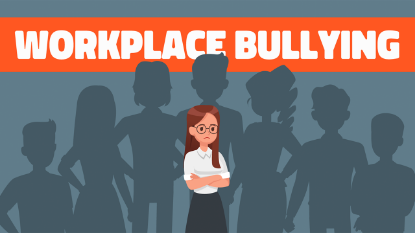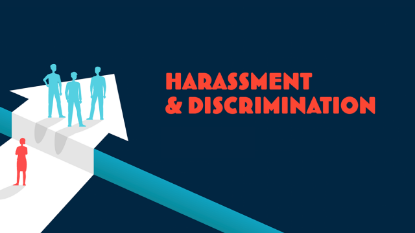
Blog
Workplace bullying training in hospitality: Legal duties and cultural impact
In Australia’s hospitality sector—known for its fast pace, diverse teams, and often high-pressure environments—workplace bullying remains an under-addressed issue. It doesn’t just damage team morale; it creates serious legal, cultural, and operational risks. For HR and L&D leaders, training is the front line in preventing harm, setting expectations, and creating psychologically safe workplaces.
According to research by the University of Queensland and RMIT, over 60% of Australian hospitality workers have reported experiencing verbal or psychological bullying, sexual harassment or racial abuse—and more than 70% have witnessed such behaviour in their workplace (UQ & RMIT, 2023).
This makes bullying not just a compliance risk, but a deeply rooted cultural challenge that demands consistent and visible leadership.
A strong anti-bullying stance doesn’t just reduce legal exposure—it helps build a more inclusive, respectful culture where staff feel safe, valued, and motivated to stay. In hospitality, where turnover is high and teams work under pressure, culture isn’t a ‘nice to have’—it’s a core operational advantage.
This article outlines your obligations around bullying and harassment, what effective training looks like in hospitality settings, and the most common compliance gaps to avoid. Whether you're operating a single venue or a national group, it’s critical to make your approach consistent, audit-ready, and people-focused.
What the law says: Bullying, harassment, and employer responsibilities
In Australia, workplace bullying is defined under the Fair Work Act 2009 as repeated, unreasonable behaviour that creates a risk to health and safety. It can come from managers, peers, or even customers—and includes verbal abuse, humiliation, intimidation, and exclusion.
While sometimes used interchangeably, bullying, harassment, and discrimination are different legal concepts:
- Bullying refers to repeated harmful behaviour not necessarily based on a protected attribute.
- Harassment involves unwanted behaviour linked to things like gender, race, or age.
- Discrimination occurs when someone is treated unfairly based on a protected characteristic.
AU-specific obligations:
- The WHS Act (Work Health and Safety) requires you to eliminate or minimise risks to workers’ psychological health.
- The Respect@Work report and legislation reinforce employer responsibilities to take proactive, preventive steps—including training.
- The Fair Work Commission allows employees to lodge anti-bullying claims—creating reputational and legal exposure for venues without robust training or policies in place.

How to roll out effective workplace bullying training
For training to reduce risk and build culture, it must be more than a one-off checkbox. It needs to be consistent, scenario-based, and embedded into how your teams operate.
Key implementation steps:
- Train all levels: Make training mandatory for all staff, including casuals, leaders, and head office teams.
- Use relatable content: Focus on situations common in hospitality—e.g. high-stress kitchen interactions, managing customer abuse, or cliques on shift.
- Make it scalable: Deliver training digitally through an LMS to cover all sites and maintain version control.
- Clarify responsibilities:
- HR or People & Culture sets the training cadence and policy
- Venue managers reinforce behaviours on the floor
- Employees must recognise, report, and respond appropriately
Training should also include clear information on how to report incidents, what support is available, and what protections exist for whistleblowers.
Culture change starts with clarity
Bullying and exclusion often persist in hospitality because expectations are vague, or harmful behaviours are normalised. When teams receive clear, consistent training—and see leaders model the right behaviour—it resets cultural norms. Over time, what was once tolerated becomes unacceptable. That’s how training becomes more than a checkbox—it becomes the foundation for culture change.
This is a perspective echoed by experts in mental health. As Georgie Harman, CEO of Beyond Blue, aptly puts it:
“Bullying is usually blamed on individuals, or interpersonal problems, or ‘personality clashes’. This is too simplistic. Bullying occurs because of cultural, organisational and structural issues in the workplace.” 1
This reflects what many hospitality teams experience daily. Bullying is rarely about one ‘bad apple’—it often stems from high-pressure environments, unclear responsibilities, disorganised leadership structures, and insecure employment. When venues lack clear expectations, psychological safety, and consistent follow-through, harmful behaviours can become embedded.
Frontline workers who feel safe are more likely to perform better, stay longer, and contribute positively to team dynamics. Leaders who set the tone with respect and accountability drive a more cohesive, values-driven workplace culture.
The hidden health cost of workplace bullying
Workplace bullying carries a significant health cost that extends beyond the direct target, deeply affecting witnesses as well. Both victims and bystanders frequently experience serious psychological impacts, including anxiety, stress, depression, and burnout.
In the high-pressure, often insecure environment of the hospitality sector, these health risks are severely amplified. Without effective intervention, the negative effects can rapidly escalate, leading to increased burnout, high staff turnover, and more severe consequences.
Prioritising a safe workplace isn't merely a cultural objective; it's a fundamental responsibility essential for protecting your people's well-being and the stability of your business.
Common pitfalls to avoid
Despite best intentions, many hospitality businesses fall short in their bullying prevention efforts. Here’s what to watch out for:
Pitfall | Impact | Fix |
| One-off training | Behaviour slips without reinforcement | Embed refreshers annually |
| No documentation | Hard to prove compliance in audits | Use LMS tracking and store policies centrally |
| Ignoring casuals | Major workforce segment goes untrained | Include in onboarding |
| No reporting process | Incidents go unreported or mishandled | Provide anonymous channels and escalation steps |
| Ambiguous leadership roles | Managers unsure how to act | Train leaders separately on complaint handling |
Even well-meaning companies can face legal action if they lack a documented, proactive approach to bullying prevention.
Compliance checklist and next steps
To stay compliant and support a respectful team culture:
✅ Deliver regular bullying training to reinforce respectful workplace culture
✅ Include bullying and harassment content in induction/onboarding
✅ Establish clear, documented policies and reporting pathways
✅ Train leaders to handle reports confidently and legally
✅ Store training records for audit and insurance purposes
✅ Refresh training annually and review policy updates
Need help improving your compliance program?
→ Contact Allara Global
Need support?
If you or someone you know is being bullied at work, you don’t have to deal with it alone.
Talk to your HR or People & Culture team, or reach out to an external support service:
- Lifeline: 13 11 14 — 24/7 crisis support
- Beyond Blue: 1300 22 4636 — mental health support
- Fair Work Ombudsman: — for reporting workplace bullying
1 Source: Why is workplace bullying so widespread and rising? by Professor Michael Quinlan, Emeritus Professor, UNSW Business School. Originally published on Business Think, 16 January 2018.
Related posts
Blog
New Training Pathway: Respect@Work
Proactive, inclusive, and legally aligned training for today’s workplaces
Blog
Respect@Work – Changes to the Sex Discrimination Act for Employers
New Positive Duty on Employers to Prevent Workplace Sexual Harassment, Sex Discrimination, and Victimisation




